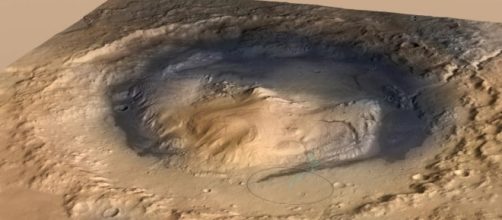A new study released by NASA scientists and based on the observations of the Curiosity rover suggests that Gale Crater on Mars could have harbored life in the past. These findings obviously have scientists excited, as Curiosity has studied the area for almost five years now and they could help find out if the 'Red Planet' ever supported life.
What is Mars's Gale Crater
Gale Crater was once home to a lake that filled much of the crater, which NASA scientists now believe had multiple habitable environments that were divided by depth. This would have made the large crater, which measures 96 miles (154 kilometers) in diameter, similar to certain water bodies on Earth.
Gale Crater is estimated to be between 3.5 to 3.8 million years old. In the center of the crater rises Aeolis Mons, the tenth tallest mountain on Mars. It is 18,000 feet (5.5 kilometers) tall.
What did Curiosity find?
The Curiosity rover landed inside Gale Crater when it touched down on Mars back in August 2012, with its mission being to find out if the region had ever been capable of supporting microbial life. Since its arrival, Curiosity has studied many different rocks in the crater, over a range of hundreds of feet of elevation. While this may not seem like a lot, that represents a time span that covers many millions of years ago.
The rover found a mound of evidence that Gale Crater had a possibly habitable lake and stream system a long time ago.
Continued observations found that this system likely lasted from around 3.8 billion to 3.1 billion years ago. It is not clear if surface water would have been continuous over that time or if there would have been periods where it came and went.
NASA scientists analyzed the geochemical and mineralogical data that the rover gathered from lakebed rocks during its first 1,300 Martian days. The data spanned 330 vertical feet (100 meters) of rock deposits, that are the equal to 10 million years of thickness at the bottom on a lakebed on Earth.
All of this data led scientists to discover that the lake that had been at Gale Crater was stratified by depth, as mentioned above. The surface area of the lake had a lot more oxidants than deep down.
Oxygen is a common oxidant and this may mean that the top part of the lake could have been rich in dissolved oxygen. There could still have been life in the oxygen poor areas, like on Earth, but the potential microbes living their would have been very different.


